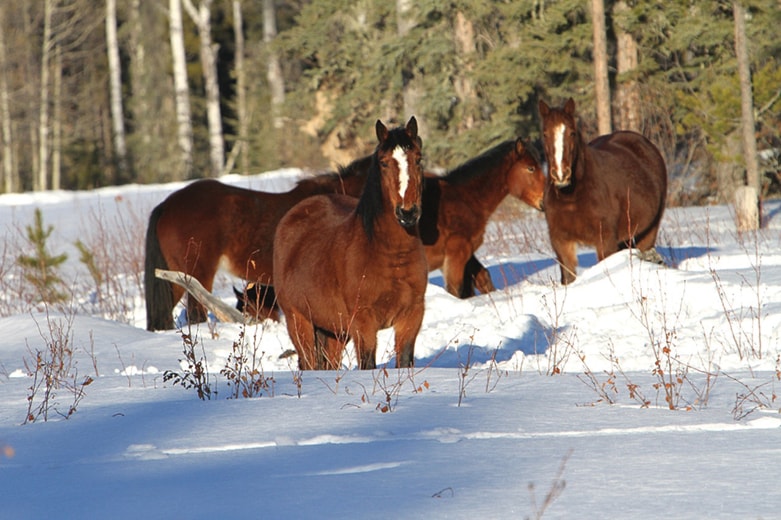Sundre rancher Bryn Thiessen’s family history with Alberta’s wild horses goes back to the early 1950s.
He appreciates their beauty and right to roam as much as the next person. But he also believes some population control is necessary.
The preacher and cowboy poet is among those holding permits to capture some of the horses as part of an Alberta government program to round up as many as 200 to thin out the population. Thiessen’s permits allow him to catch up to 28 horses, although he has yet to go out after any with baited corrals.
He’ll try to find homes for the best ones, and has raised and bred some himself over the years. Some captures may end up going to slaughter, a fate that is kinder for broken-down animals than a natural death, which often means falling prey to predators.
Thiessen, 54, is well aware there are many who are absolutely opposed to meddling with the horse populations — and especially sending horses to slaughter houses.
He respects other opinions, and would like to see real conversation about the best way to control the horse population.
“I have nothing against WHOAS (Wild Horses of Alberta Society) when I read their statement and their practices and all that,” he said from his ranch about 20 km southwest of Sundre, his home since 1975.
WHOAS has campaigned to get the government to reconsider the annual roundup, which the group considers unnecessary.
“I would like an open dialogue and some perspective is what I’m trying to get going,” he said.
The province says the number of horses in the West Country is growing too fast. An advisory group, the Feral Horse Advisory Committee, recommended last fall that a roundup of about 200 horses take place this winter.
Its decision took into account a growth in the horse population from 778 animals counted in March 2012 to 980 by the following spring. The population was around 200 horses in 2006, says Alberta Environment and Sustainable Resource Development, which does a helicopter count each March.
While the slaughtering of some — opponents say most — of the horses captured spurs the most emotion in the debate, Thiessen sees another side as well.
In the U.S. when slaughtering was curtailed, the number of abandoned and abused horses climbed.
And while many horse lovers hate the idea of horses being used for meat, it has long been a part of the livestock industry.
According to a 2008 Alberta Farm Animal Care report, the number of horses processed for meat in Canada doubled to about 100,000 in 2007, the year the U.S. banned processing horse meat for human consumption.
“I’m not saying we need to get rid of the horses, I’m saying we need to have some management practice and be fair to all the users of the area, not just one or two,” said Thiessen.
Wild horses share the land with cattle ranchers, wildlife, quadders and other recreational users. They all have an impact on the land.
“I’m not pro one and against all the rest. I’m saying let’s all get together and come up with a strategy.”
Thiessen, who rides the West Country ranges regularly and works sometimes for other cattle ranchers, believes the wild horse population has gotten too big.
“It’s nothing to see 100 horses in a day, depending on the time of year. And these horses are running on not that big an area.”
While there is plenty of land in wild horse country, not all of it supports the forage grasses of choice for the animals. They compete for the same choice grasses as livestock and wildlife.
The current permit system is probably the best option now, but that doesn’t mean other alternatives aren’t out there, he said.
pcowley@www.reddeeradvocate.com
